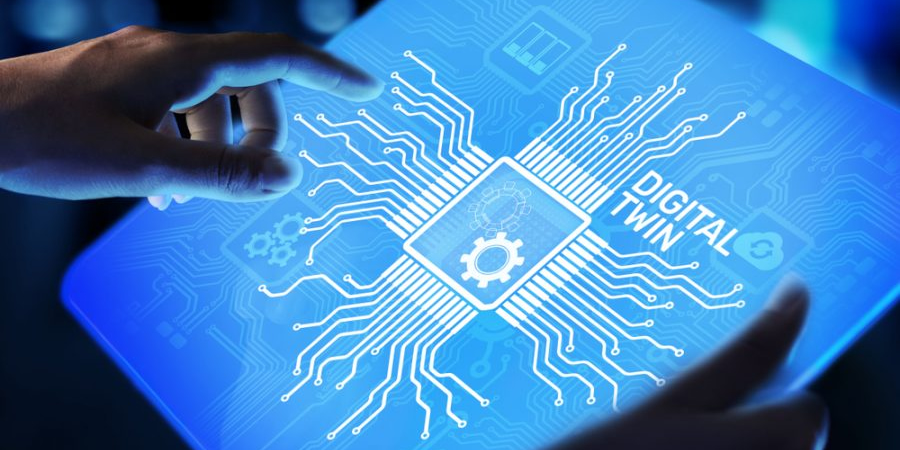By now, most of us are quite familiar with the term Digital Twin being used across industries, including the ICT industry. The concept of the digital twin has been defined as a digital representation or visualization of a physical or nonphysical entity, such as an organization, city, product, a person that can assist technologists to simulate, predict and forecast the behavior and even control aspects of the physical counterpart in real-time. Digital twin technology (DTT) is gaining momentum for its business benefits, including speeding up product development lifecycles, cost-effectiveness, and creating result-oriented new business models.
DTT integrates multiple technologies like 3D simulation, IoT, 5G, big data, blockchain, edge computing, cloud computing, and artificial intelligence to achieve the results. The data used in digital twins are collected from IoT devices, edge hardware, HMIs, sensors, and other embedded devices. Thus, the captured data represents high-level information that integrates the behavioral pattern of digitized assets in the digital twin.
What were telcos doing before DTT?
Up until now, telecom infrastructure upgrades comprise various sets of tools and technologies for planning, design, deployment, operations, and management of networks provided by different vendors mostly used in siloes between departments. Although traditional networking management methods have held the fort thus far, a holistic intelligence and efficient coordination between the design, production, and operation functions of both the network infrastructure and services is the need of the hour.
Use cases for telecoms
The telecom network infrastructure is under constant pressure to deliver optimized performance even as the number of connected devices shows no sign of receding. The global 5G services market size is expected to reach up to $664.75 billion at a compound annual growth rate (CAGR) of 46.2%, from 2021 to 2028. Experts say DTT will help CSPs make accelerated decisions on where to invest from a 5G perspective to drive next-generation innovation around mobility and consumption of wireless networks and connected services. DTT has the potential to transform the entire CSPs network or parts of it such as sites, towers, network elements, and services.
Network planning and design
The addition of new technologies makes network capacity planning and designs a tedious venture for network engineers as existing network configurations require massive tweaking to adapt to the new changes. Support activities carried out by operators through network modeling, planning, simulation, deployment, orchestration, and operation are mostly done separately, and tracking the end-to-end view of the network and its services is hardly efficient. However, DTT can gather all the data coming from these tools to develop an accurate network inventory and user/device data from live operations through its AI/ML capabilities and take corrective measures in real-time.
Tower and sites management
Telecoms sites or towers require continuous monitoring as there are various components such as antennae, base station equipment (BTS/NodeB/eNodeB), power generators, batteries, fire alarms, surveillance cameras, and aerial warning lights that need to be managed. Using sensor networks, telecom sites and tower data including proximity, image, temperature, motion, and position can be fed into a DT of the tower or site to allow operations and field service management team to respond to whatever glitches. As the equipment on the towers is sourced from multiple vendors, its field performance, lifecycle statistics, fault-related data, and patterns are key information to address the inconsistencies. Additionally, DT allows operators to share this data and insights as a service to equipment providers and charge compensation on the data.
Field service management
Network downtimes are nightmares for telecom operators. As per recent data from Gartner, the average cost of network downtime for businesses was $5,600 per minute. With the use of DT, precious time can be saved when field service personnel visit sites to fix the fault lines with inadequate knowledge about the problem. A DT will allow the extraction of accurate information along with the solutions before they go on-site with the privilege of additional support from the command center remotely.
Playground for DevOps
The possibility of virtualization has made networks programmable. SDN solutions enable faster service innovation and deployment. However, adding new services on existing networks is no walk in the park. The planning, design, and deployment activities require organizing and testing the interworking of multiple vendor devices and solutions. A DT of the network and associated services can enable every new service to be simulated, tested, designed, and adjusted before being deployed on the real network making the collaboration between DevOps team that much less stressful.
Connected twins
Another area where telcos can benefit from DTT is when entering new verticals. For instance, as data integration, artificial intelligence (AI) and the internet of things (IoT) extend to practically everything, digital twin models used for automobiles manufacturing can be combined with the telecom network DT models to simulate how 5G networks could impact the automotive network of roads and navigation, thereby creating new opportunities for collaborative projects.
When it comes to the orchestration of processes and devices, prediction and extraction of insights, simulation and data visualization, DTT is the next-generation solution that integrates assets of multiple technology vendors, equipment makers, and system integrators to create value for the enterprise business. The digital operations of the future will highly rely on the ability to incorporate intelligence, insights, tools, data visualisation, and automation to enable telecommunication companies to thrive. DTT is poised to manage the network and services in an intelligent, proactive, dynamic manner that will allow telecoms ecosystem partners to work together collaboratively and productively.
